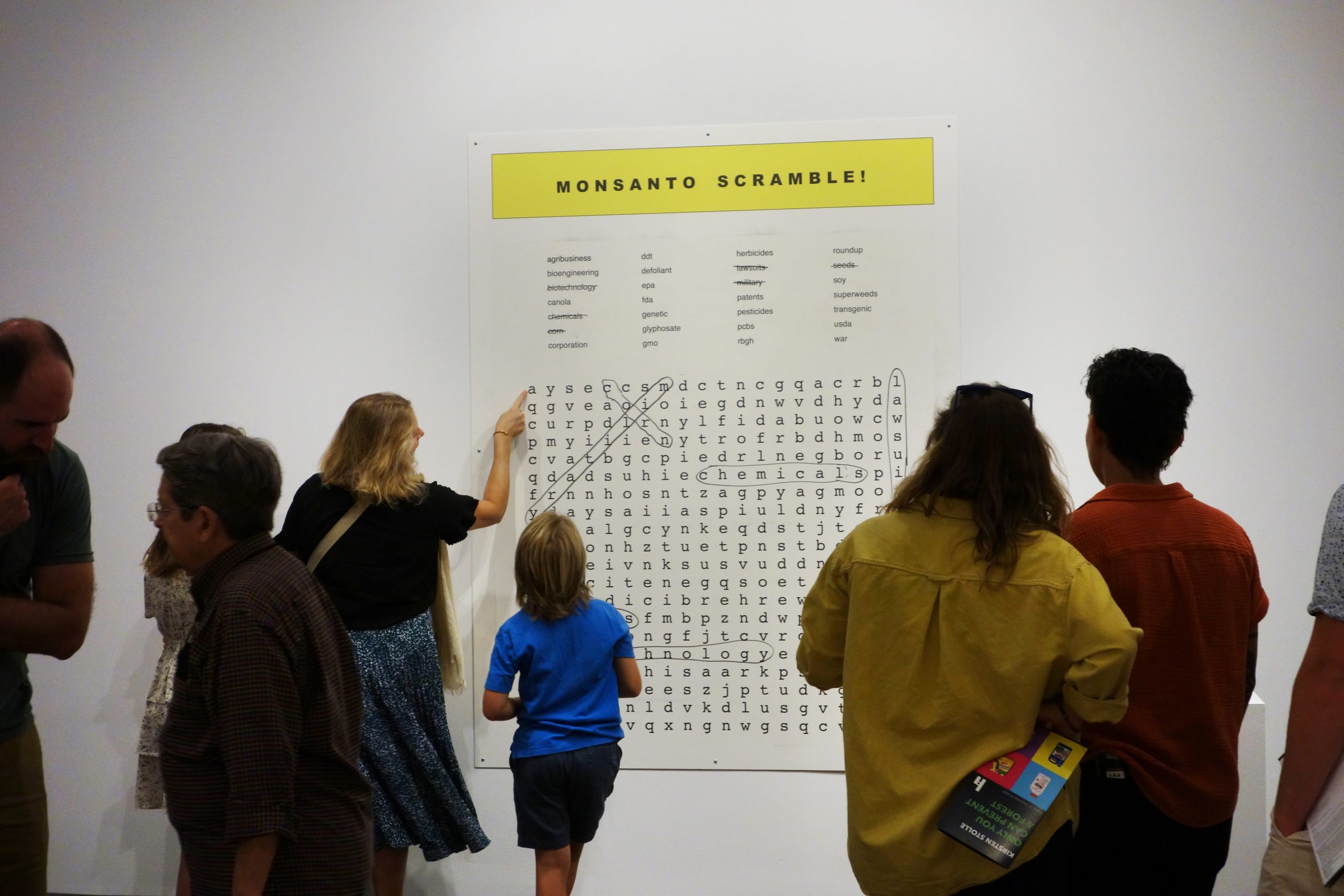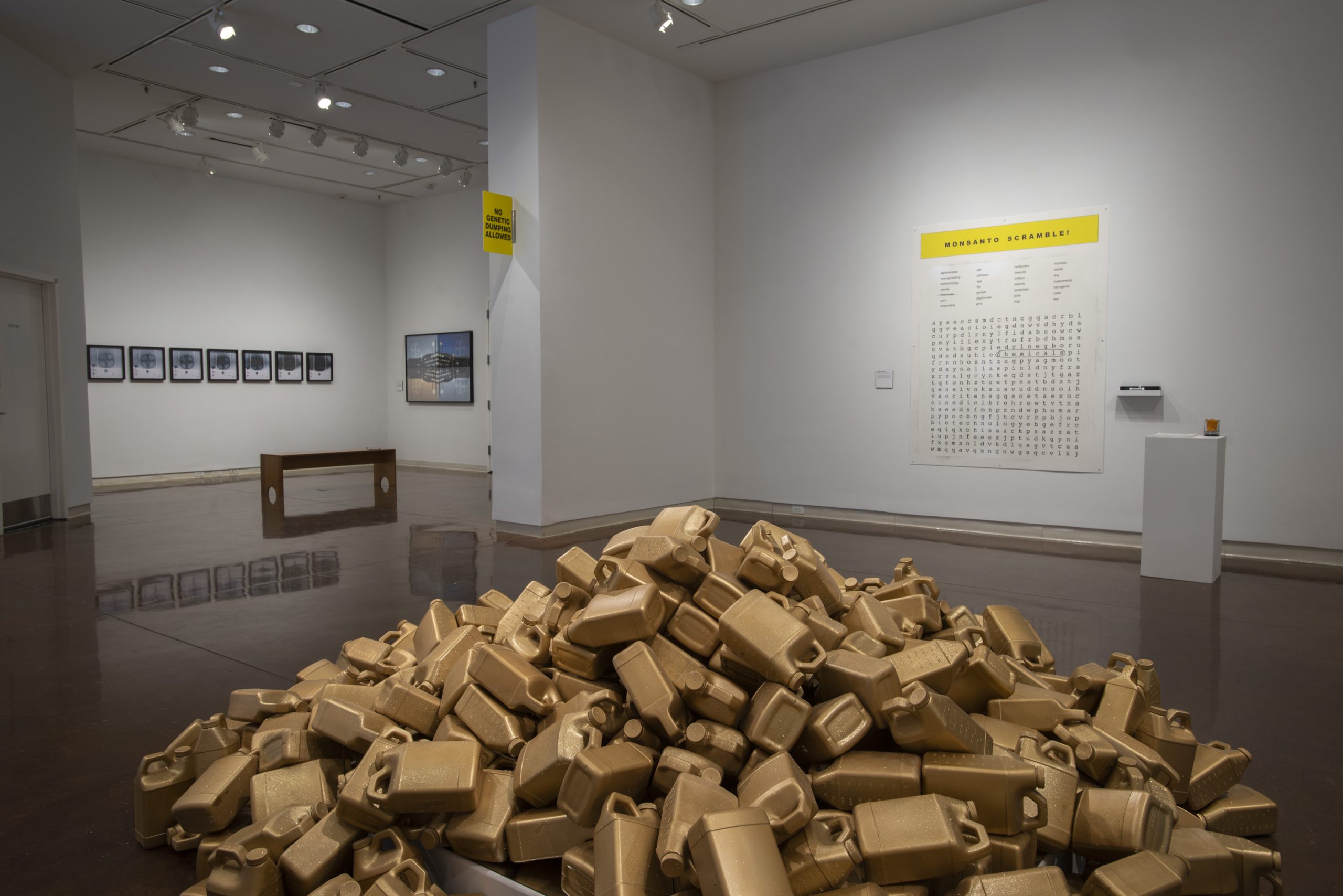


Our fall 2022 intern Clare guides readers on a deeper look at the interactive piece on view in Kirsten Stolle: Only You Can Prevent A Forest.
Kirsten Stolle’s Only You Can Prevent A Forest is an exhibition that, in its entirety, challenges viewers to get up close and personal with the content and the message of the art. Creating an interactive opportunity for all ages, Stolle’s Monsanto Scramble, the large-scale word search that hangs on the museum wall allows visitors to fully immerse themselves in the art as they are invited to grab a dry erase marker and search for words that draw from the narrative of the exhibition. In a way that seems to mimic the advertising of agrichemical companies, Monsanto Scramble develops a mode of attention-grabbing and presenting information through single words in order to tell a story most people have never been told.

As Only You Can Prevent A Forest has been on view this fall, we have watched Monsanto Scramble draw the attention of many and become a very popular work within the exhibition. People are initially drawn to it because of the challenge, but in turn, time spent working on the word search allows for deeper connections and contemplations to be made. Interactive art is unique in this way in that it cultivates a relationship between the art and the viewer where the viewer is invited to become part of the art. Without visitors to complete the word search, Monsanto Scramble would simply appear as a big jumble of letters. Once viewers step in and find the words within the scramble, it becomes full of meaning. This also highlights the exhibition value of science-art which has such a deliberate message to be conveyed. The viewer is essential in order to fulfill the art’s purpose and plays a valuable role as the receiver of the information.

Monsanto Scramble has also come to serve the community in more ways than one—bringing people together and encouraging teamwork. We have watched all kinds of visitors find joy in completing the word search, from groups of students to parents and children, couples, and even brand-new friends. One day, two women came into the exhibition separately and wound up beginning the word search together. They spent almost an hour talking and getting to know one another while doing so, and afterward, they proudly came up to the front desk to announce that they not only had finished the entire word search but also had just become best friends. It was heartwarming to see the friendship that Monsanto Scramble had sparked, and it made me reflect on what this said about not only the power of interactive art but also the greater message of the exhibition. By encouraging viewers to come together and immerse themselves in the work, Monsanto Scramble has become representative of the idea that teamwork is essential in order to make changes for our planet and our collective future. Together, we can raise awareness on the global impact of chemical companies and create the necessary change that Kirsten Stolle’s exhibition calls for.
